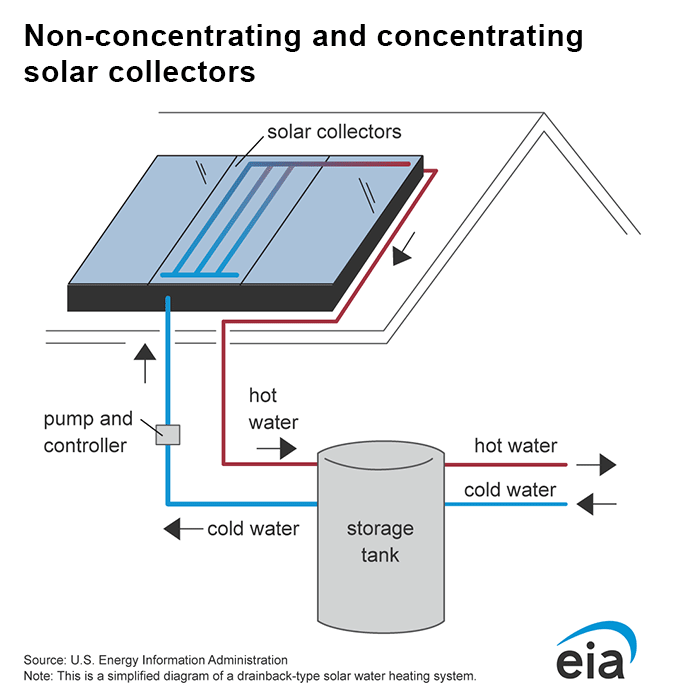Heating with the sun's energy
People use solar thermal energy for many purposes, including heating water, air, and the interior of buildings and generating electricity. There are two general types of solar heating systems: passive systems and active systems.
Passive solar space heating is when the sun shines through the windows of a building and warms the interior. Building designs that optimize passive solar heating (in the northern hemisphere) usually have south-facing windows that allow the sun to shine onto solar heat-absorbing walls or floors in the building. Solar energy is absorbed by the building materials and heats the interior of buildings by natural radiation and convection. Window overhangs or shades block the sun from entering the windows during the summer to keep the building cool.
Active solar heating systems move heated fluid (air or liquid) into the interior of the building or to a heat storage system, where the heat is released when needed. Fans or pumps move the fluid through collectors to be heated, then to the interior of the building or heat storage system, and then back to the collector to be reheated. Active solar water heating systems usually have a tank for storing solar-heated water.
Non-concentrating and concentrating solar collectors
Non-concentrating solar collectors
Solar energy systems that heat water or air in buildings usually have non-concentrating collectors, which means the area that intercepts solar radiation is the same as the area absorbing solar energy. Flat-plate collectors are the most common type of non-concentrating collectors for water and space heating in buildings and are used when temperatures lower than 200°F are sufficient.
Flat-plate solar collectors usually have three main components:
- A flat metal plate that intercepts and absorbs solar energy
- A transparent cover that allows solar energy to pass through the cover and reduces heat loss from the absorber
- A layer of insulation on the back of the absorber to reduce heat loss
Solar water-heating collectors have metal tubes attached to the absorber. A heat-transfer fluid is pumped through the absorber tubes to remove heat from the absorber and transfer the heat to water in a storage tank. Solar systems for heating swimming pool water usually have flat-plate collectors that do not have covers or insulation for the absorber, and the pool water circulates from the pool through the collectors and back to the pool.
Solar air-heating systems use fans to move air through flat-plate collectors and into the interior of buildings.
Concentrating solar collectors
The area intercepting solar radiation on concentrating collectors is greater, sometimes hundreds of times greater, than the absorber area. A highly reflective collector focuses, or concentrates, solar energy onto an absorber. The collector usually moves throughout the day so that it maintains a high degree of concentration on the absorber. Solar thermal power plants use concentrating solar collector systems because they can produce the high temperature heat needed to generate electricity.
Last updated: January 12, 2024.

